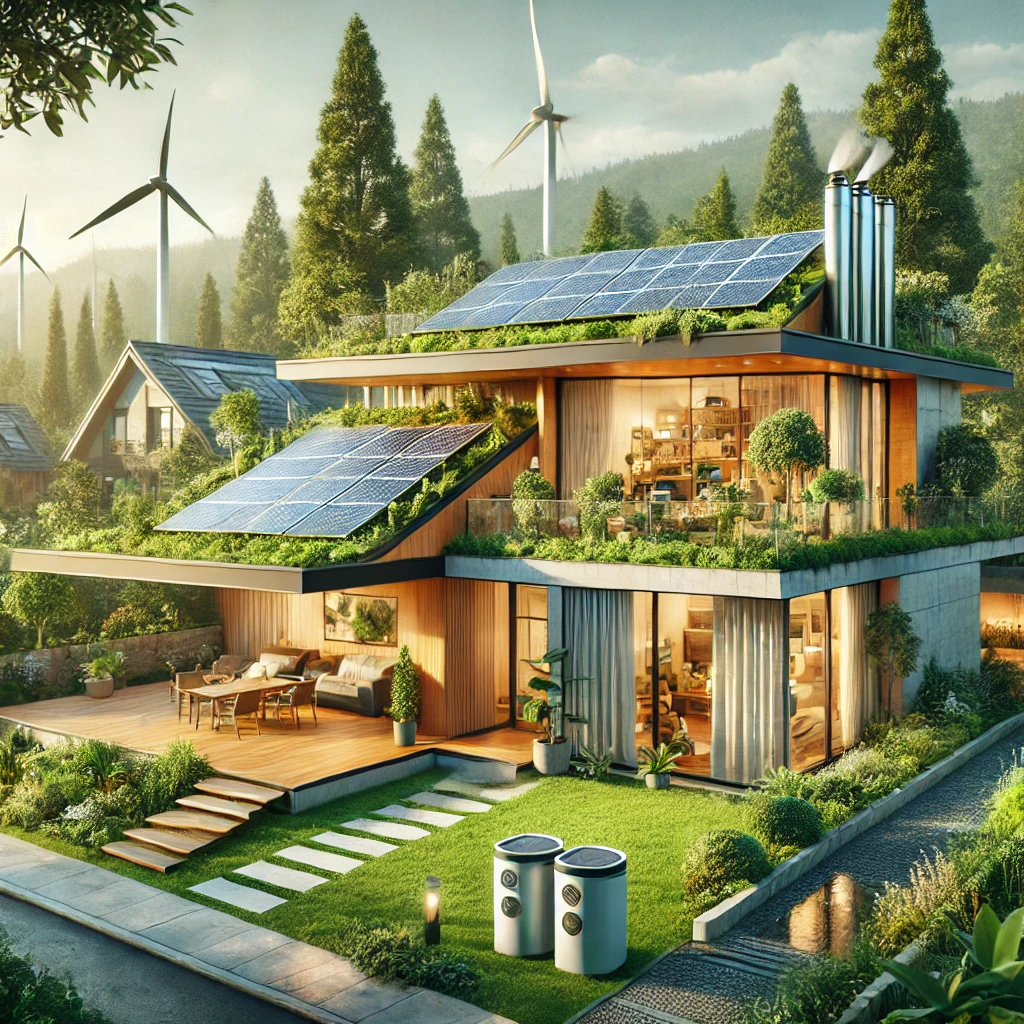
Sustainable Architecture: Designing Homes for a Greener Tomorrow
Imagine waking up in a home where the morning sun not only lights up your room but also powers your coffee maker. Where rainwater doesn’t just drain away—it nourishes your garden. Welcome to the world of sustainable architecture, where every brick and beam works in harmony with nature.
What is Sustainable Architecture?
Sustainable architecture isn’t just a fancy buzzword. It’s the art and science of designing buildings that are environmentally friendly, energy-efficient, and resource-conscious. Think of it as giving Mother Nature a high-five while building your dream home.
Why Does Sustainable Architecture Matter?
Because climate change isn’t waiting. Our planet is heating up, glaciers are melting, and wild weather is becoming the norm. Sustainable homes help reduce carbon footprints, conserve energy, and promote healthier living environments. Plus, who doesn’t want lower utility bills?
Key Principles of Sustainable Architecture
- Energy Efficiency: Maximize natural light, use smart appliances, and invest in insulation.
- Water Conservation: Install low-flow fixtures and rainwater harvesting systems.
- Eco-Friendly Materials: Choose recycled, renewable, or locally sourced materials.
- Smart Design: Optimize space and orientation to reduce heating/cooling needs.
Renewable Energy Insights for Greener Homes
Renewable energy isn’t just for sci-fi movies anymore. Solar panels, wind turbines, and geothermal systems are becoming household staples. Here’s how they can power your sustainable home:
Solar Power for Homes: Bright Idea or Hype?
Definitely a bright idea! Solar panels convert sunlight into electricity, slashing your energy bills. Plus, with incentives and rebates, the initial cost is more affordable than ever.
Benefits of Using Solar Energy at Home
- Reduces electricity costs significantly
- Increases property value
- Minimal maintenance required
- Decreases reliance on fossil fuels
Energy-Efficient Innovations Shaping Modern Homes
Gone are the days when energy efficiency meant dim lights and drafty windows. Today’s innovations are sleek, smart, and downright cool.
Energy-Efficient Appliances: Small Changes, Big Impact
From refrigerators that adjust cooling based on usage to washing machines that save gallons of water—energy-efficient appliances are game changers. Look for the ENERGY STAR label when shopping!
Top Green Building Techniques You Should Know
Building green isn’t just about the materials—it’s about how you use them:
- Passive Solar Design: Harness natural light and heat to reduce energy needs.
- Green Roofs: Add insulation and reduce stormwater runoff.
- Cross Ventilation: Maximize airflow to keep homes cool naturally.
Transportation Matters: Best Electric Vehicles 2025
Driving an electric vehicle (EV) complements your sustainable lifestyle. The best electric cars for an eco-friendly lifestyle in 2025 offer longer ranges, faster charging, and futuristic designs.
Top Picks for 2025
- Tesla Model 3: Affordable, efficient, and stylish
- Ford Mustang Mach-E: A sporty EV with impressive range
- Nissan Leaf: Perfect for city driving with zero emissions
How to Make Your Home More Energy-Efficient
Want to save money and the planet? Here’s how:
- Upgrade to LED lighting
- Seal windows and doors to prevent drafts
- Invest in smart thermostats
- Use programmable power strips
- Plant shade trees strategically around your home
How to Start Living Sustainably
Sustainable living isn’t an all-or-nothing game. Small steps lead to big changes:
- Reduce single-use plastics
- Compost food scraps
- Buy local and organic produce
- Practice mindful consumption—ask, “Do I really need this?”
How to Live a Zero-Waste Lifestyle
Zero-waste living isn’t about perfection; it’s about reducing what you throw away. Reuse, recycle, and rethink your habits. Swap plastic bags for cloth ones, ditch bottled water for a reusable bottle, and say goodbye to disposable coffee cups.
Top Green Technologies Shaping the Future
From smart homes to biodegradable materials, green tech is booming. Innovations like carbon-capturing concrete, algae biofuel, and water-purifying solar panels are paving the way for a greener tomorrow.
Conclusion: Building a Greener Future Starts at Home
Sustainable architecture isn’t just a trend—it’s the future. By embracing renewable energy insights, adopting sustainable living tips, and supporting energy-efficient innovations, you’re not just building a house—you’re creating a legacy. A greener, cleaner, and brighter future starts with the choices you make today.
Frequently Asked Questions (FAQs)
1. What are the main benefits of sustainable architecture?
Sustainable architecture reduces environmental impact, lowers energy costs, and creates healthier living spaces. Plus, it increases property value and promotes long-term cost savings.
2. How can I make my existing home more sustainable?
Start small: switch to LED bulbs, install a smart thermostat, improve insulation, and consider adding solar panels. Even simple changes like using eco-friendly cleaning products make a difference.
3. Are sustainable homes more expensive to build?
While the upfront costs can be higher, sustainable homes save money in the long run through reduced energy bills, maintenance costs, and increased property value.
4. What is passive solar design?
Passive solar design uses a building’s orientation, materials, and layout to naturally regulate temperature, reducing the need for artificial heating and cooling.
5. Can I achieve a zero-waste lifestyle while living in a city?
Absolutely! Urban zero-waste living is possible through mindful consumption, recycling, composting, and supporting local sustainable businesses.